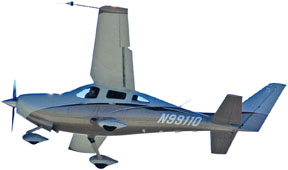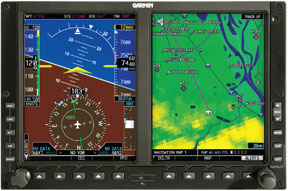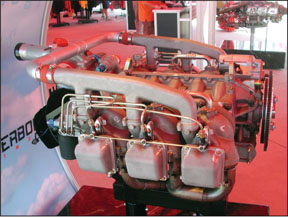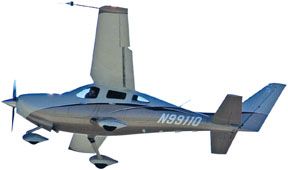As a stage for new airplanes and products, EAA Air Venture at Oshkosh is nothing if not brightly illuminated. Everyone comes here expecting to be dazzled and sometimes the people charged with the dazzling-the manufacturers-actually succeed. And sometimes not. AirVenture 2006 proved as much surprising as dazzling.

In our estimation, the three biggest unexpecteds were a surprise showing of Cessnas proposed new “next gen” airplane, Hondas announcement that it will, after all, enter the light jet market and the rollout by Garmin of two new EFIS products for the aftermarket, something we didnt expect to see for several years.
Of course, for every dazzler, there’s a yawner, too. If you cant see the forest for the trees at Oshkosh, its probably because the view is obscured by clouds of light sport aircraft, with even Cessna getting into the act with its own LSA design this year. While everyone we talk to is warm to the idea of LSAs, few harbor any illusions that the market will be big enough to support all the would-be comers to this new field.
The same could be said of very light jets. Two more advanced closer to market, both of which weve known about but didnt expect to see this time around. The surprise was Hondas major show presence and the announcement that it will put its jet into production, partnering with Piper, who will apparently handle sales and support. We first saw the Honda at AirVenture last year, where it had the distinct whiff of a trial balloon, much like Toyotas piston single which appears to be in hibernation.
No, Honda said at AirVenture this year, theyll go forward, promising a seven-seat cabin-including crew-and a 420-knot maximum speed with a range of 1100 nautical miles. Interestingly, Honda says it will team with New Piper to market the jet, with the Vero Beach company presumably providing marketing and support for the HondaJet. (Both companies were light on details about this.) Just to stir the pot more, New Piper will pursue its own light jet product, as if there arent enough choices already.
For the HondaJet, power will come from two GE-Honda HF118 engines mounted on those quirky reverse pylons atop the wing that drew many a curious comment last year. Honda developed the engines-ultimately 2000 pounds per side-and brought GE in as a partner to lead the certification effort. GE says the engine will be certified by late 2007. Although Honda is taking orders for a three- to four-year aircraft certification project, no firm prices were provided.
Prices have been announced on Diamonds new D-Jet, which also made its debut at AirVenture. We werent surprised that the initial $850,000 price is now a more realistic $1.38 million. Eclipse did the same thing when it introduced the 500 in 2000, prompting us to wonder why companies continue to lowball the jet numbers when anyone with passing knowledge of airplanes knows that the under-$1-million jet is a pipe dream.
The D-jet will uniquely share the lower flight levels-say the mid-20s-with yet another jet project just in the conceptual stages, the Cirrus jet. Its months away from taking flight, but Cirrus CEO Alan Klapmeier concedes it will be the lowest and slowest of all the jets and thus the perfect step-up for the billion or so pilots buying his popular SR22 piston cruiser. And like the smaller Cirri, it will have a ballistic parachute.
D-jet buyers will have a similar leap forward from the Star and Twin Star aircraft, both strong sellers. Although neither of these jets are as fast as the Mustang or Eclipse and probably the HondaJet, the turtles may yet beat the hares, since both are designed to cruise economically in the 20s, where the rest of the big dogs don’t run. And speaking of big dogs, the ostensible Alpha pooch of light jets, the Eclipse 500, officially crossed the certification finish line and was awarded its conditional type certificate at Oshkosh. Cessnas Mustang is close behind.
And behind Cirrus-maybe quite a bit behind-is Cessnas “next gen” airplane, which made a surprise flyby early in the show. There was no advance announcement and most showgoers missed it. From the photos, it looks like a strutless Centurion done over by Pinin Farina.
The wings are forward swept, the fuselage is curvy and slick looking, with at least three doors and the powerplant is believed to be a Lycoming, possibly an IO-580. But Cessnas Jack Pelton told us a diesel powerplant hasnt been ruled out. (Could it be the one Lycoming had in its booth?) Pelton said the next gen airplane flew in June and that we’ll learn more later this year.
Glass for the MassesA few days before AirVenture opened, the worst-kept secret of the show leaked out-Garmins introduction of the GPSmap 496-but one secret stayed tucked in the shadows: Garmins new G600, an iteration of the G1000 EFIS suite that will be aimed at the aftermarket. Garmin has steadfastly maintained that the G1000 wouldnt find an aftermarket niche soon, if at all, but we never thought for a moment that Garmin would ignore the aftermarket niche forever.

The G600 is a flight-display/MFD-only version of the G1000 designed to play with Garmin GNS430 or 530 navigators an owner may already have installed in the airplane. Rather than two separate displays with discrete bezels, the entire two-screen display is contained in a single bezel measuring 10 inches wide by 5.7 high and about five inches deep, with connectors. Interestingly, while the G1000 displays in landscape mode, the G600 is in portrait mode, something Garmin figures will make it easier to install in the panels of older airplanes. As does the G1000, the G600 will depend on a network of remote line replaceable units (LRUs) for attitude input, air data and GPS/comm/nav data.
Following the sensible trend in the industry, Garmin will seek approvals via the approved model list route, rather than by the problem-prone follow-on STC method. This should make the paper trail through the local FSDO less of an ordeal if not a lead-pipe cinch. Although Garmin is calling the G600 “glass for the masses,” installing one wont exactly be a nickel ride around the park. Base price of the G600 is $29,772. If you don’t already have them, you’ll need a pair of GNS430s or a 430/530 pair for GPS/navcomm sourcing. Figure on another $20,000 for that, at least. Add maybe $15,000 for labor and the total invoice might be between $45,000 and $65,000, depending on whether your panel has the navigators in place.
Nonetheless, this system-which will be available in the fall of 2007-is likely to find an enormous market for two reasons. One, Garmin has the resources and smarts to build the considerable technical support network required to grease installations and there’s a dark hole of pent-up demand for glass from owners who have airplanes theyd like to keep but who cant afford a half million bucks for a new model.
If nothing less than a G1000 will do, there’s now another way to get one without buying a new airplane: the G900X. Its essentially an uncertified G1000 aimed at the Experimental market. The G900X will do all the tricks a G1000 will, except interface with the Garmin GFC700 autopilot. Home builders will be on their own to use any other autopilot, which Garmin says will interface with the G900X, including uncertified models by TruTrak and others. Price is $66,745 and, initially, packages will be available for Lancair and Vans Experimentals.
Two other avionics development of note: Honeywell Bendix/King announced a new datalink receiver, the KDR610, an XM-based box that will display on KMD250, 550 and 850 multi-function displays. The receiver is expected to be available by the end of the year. A new EFB product also appeared at the show, the eFlyBook from ARINC. It stores and displays digitized approach plates, enroute charts , FAR/AIM and A/FD documents. The eFlyBook uses display compression technology developed by MyAirplane.com and plays on a dedicated stylus-based and wireless capable computer priced at about $1100. For more, see www.arinc.com/.
Engine TechWe love it when airplane companies make smart decisions and one of the smartest we saw at AirVenture was Cirruss announcement that it will offer Tornado Alleys turbonormalizer setup as an STC option on the SR22. As we reported in the April issue, the Tornado Alley design is we’ll engineered, delivers good performance-200 knots plus in the high teens-and is essentially done. So rather than slog through a type certificate effort with Continental, Cirrus can offer it right away as a $59,500 option. It can be retrofitted to older SR22s (eventually) and the fact that a factory option is available will prime the pump for that option. Further, a factory relationship for Tornado Alley may build a fire under further development of the PRISM engine control system proposed by Tornado Alleys sister company, General Aviation Modifications, Inc. Sooner or later, the market will declare an interest in that technology and it will benefit Cirrus customers to have it readily at hand. And if GAMI doesnt get busy with PRISM, other manufacturers will fill the breach, as Continental, Precision Airmotive and even Lycoming already are.
Precision Airmotive, for instance, showed a new experimental-only FADEC system called the Eagle EMS based on the automotive design paradigm, with pulse-width injectors and dual-channel CDI spark sources. Its flying in a PA-28 and will be available for Experimentals this fall at a price of $7900. Precision says it will move forward with certification. (See www.precisionairmotive.com/.)
Lycoming is also nibbling once again on electronic engine controls, having abandoned the EPIC initiative it unveiled at Oshkosh in 1998. The company offered no details other than to say electronic ignition is on the R&D plate and may appear later this year or early next year. And so might a diesel engine. Without fanfare, Lycoming displayed a diesel or what it calls a “heavy fuel” engine in its booth. Although few details were revealed, the design we saw-apparently a mock-up-is a six-cylinder, liquid-cooled engine with a single turbocharger. A pump/injector unit was mysteriously wrapped in a black shroud, no doubt to spook the competition. The company says four-, six- and eight-cylinder variants are envisioned in horsepower ranges between 150 and 330 HP.

While those initiatives are interesting, the Thielert Group continues to own the aerodiesel market with its top-selling Centurion 1.7 135-HP four-cylinder engine. Frank Thielert says 1500 Centurions are flying, having accumulated 220,000 total fleet hours. At OSH, Thielert announced U.S. approval for a Cessna 172 aerodiesel conversion using the 1.7 engine. Price: about $57,000 to $63,000, dependent on model. Thielert will offer these to fleet operators first, until it expands its U.S. service network by later this year or early next, after which private owners can buy in. Meanwhile, the Centurion 4.0-350 HP-is approved in Europe for the Cessna 206 single and 340, 414 and 421 Cessna twins. See www.centurion-engines.com/ for more.
Remember the huge splash Bombardier/Rotax made in 2003 with the announcement of its sophisticated overhead cam V-6 engines? Although the project has waxed and waned in visibility, the company is still at it, operating under a Florida-based offshoot called Aircraft Engine Services. As if the engine didnt have enough identity problems, its now got a new brand name called REV Aircraft Engines, to signify both its high-revving operating mode and its revolutionary design.
AES says it has an OEM customer for this engine but for more than a year has steadfastly refused to say who the airframer is, claiming the company is worried about overhanging the market and losing sales. Call us skeptical. A couple of OEMs we talked to at AirVenture like the looks of the Rotax engine but wonder if it has enough benefits over a Lycoming or Continental to justify the certification costs. AES may yet prevail, but we think they have an uphill struggle. See www.vaircraftengines.com/.
ShortsSuperior is getting bullish on cylinder sales-very bullish. Its offering a three-year, no-questions-asked warranty on its line of cylinders. See www.superiorairparts.com/ for more.
Hartzell has developed an advanced structural composite prop fabricated of Kevlar, that promises to be lighter and stronger than previous composite props and even advanced metal props. See www.hartzell.com/.
Extra Aircraft announced the 300-SHP, an upgrade of its EA-300S model that uses one of Lycomings new 350-HP Thunderbolt 580 engines. See www.extraaircraft.com/ for more.
Cessna showed a trial balloon for an LSA aircraft which looked a bit-big surprise here-like a composite Cessna 150. Surprise powerplant? A Rotax. Cessna says its undecided about entering the LSA market.
In its unending quest to expand the general aviation market, Cirrus has announced that you can now hire your own 24/7 instructor to teach you to fly your new SR22. Cost: $85,000, plus living expenses. The company has already had several takers.


